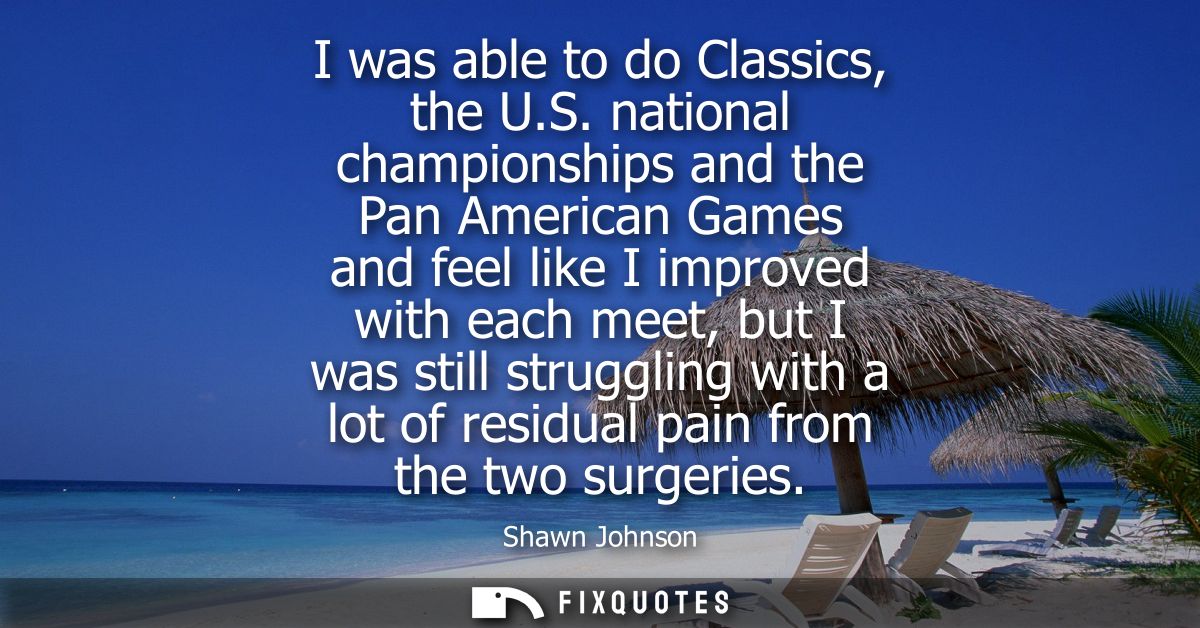"I was able to do Classics, the U.S. national championships and the Pan American Games and feel like I improved with each meet, but I was still struggling with a lot of residual pain from the two surgeries"
About this Quote
The statement maps a tightrope walk between achievement and vulnerability. It lists a progression through major competitions, Classics, the national championships, and the Pan American Games, marking an athlete’s return to form by recognizable milestones. Improvement at each meet signals regained sharpness, the incremental rebuilding of confidence, and the satisfaction of seeing hard training translate to results. Yet the parallel admission of residual pain from two surgeries reveals a deeper, quieter storyline that results alone can’t capture.
Elite sport often measures success in podiums and scores, but the body keeps its own ledger. Residual pain suggests that recovery is not a switch flipped by clearance from doctors; it is a negotiation with scar tissue, altered mechanics, and mental recalibration. Each competition becomes both a test of skill and a stress test of healing. The athlete’s sense of improvement isn’t illusory, but it coexists with limitations that are stubborn, sometimes unpredictable, and emotionally draining.
There is bravery in acknowledging that duality. The message resists triumphal simplicity. It recognizes the gap between external validation, progressing through increasingly prestigious meets, and the private grind of pain management, rehab, and doubt. The reference to multiple surgeries evokes cumulative cost; resilience is not just the ability to perform again, but to perform while managing the remnants of harm.
The statement also reflects the specificity of gymnastics, a sport where precision magnifies discomfort and lingering pain imposes risk. Improvement means greater difficulty and higher impact, which can aggravate what the body is still learning to tolerate. That tension forces mature decision-making: how far to push, when to hold back, and what it means to protect the future while honoring competitive fire.
Ultimately, it is a portrait of perseverance that refuses to ignore complexity. Progress is real. Pain is real. The achievement lies in navigating both without denying either.
About the Author

